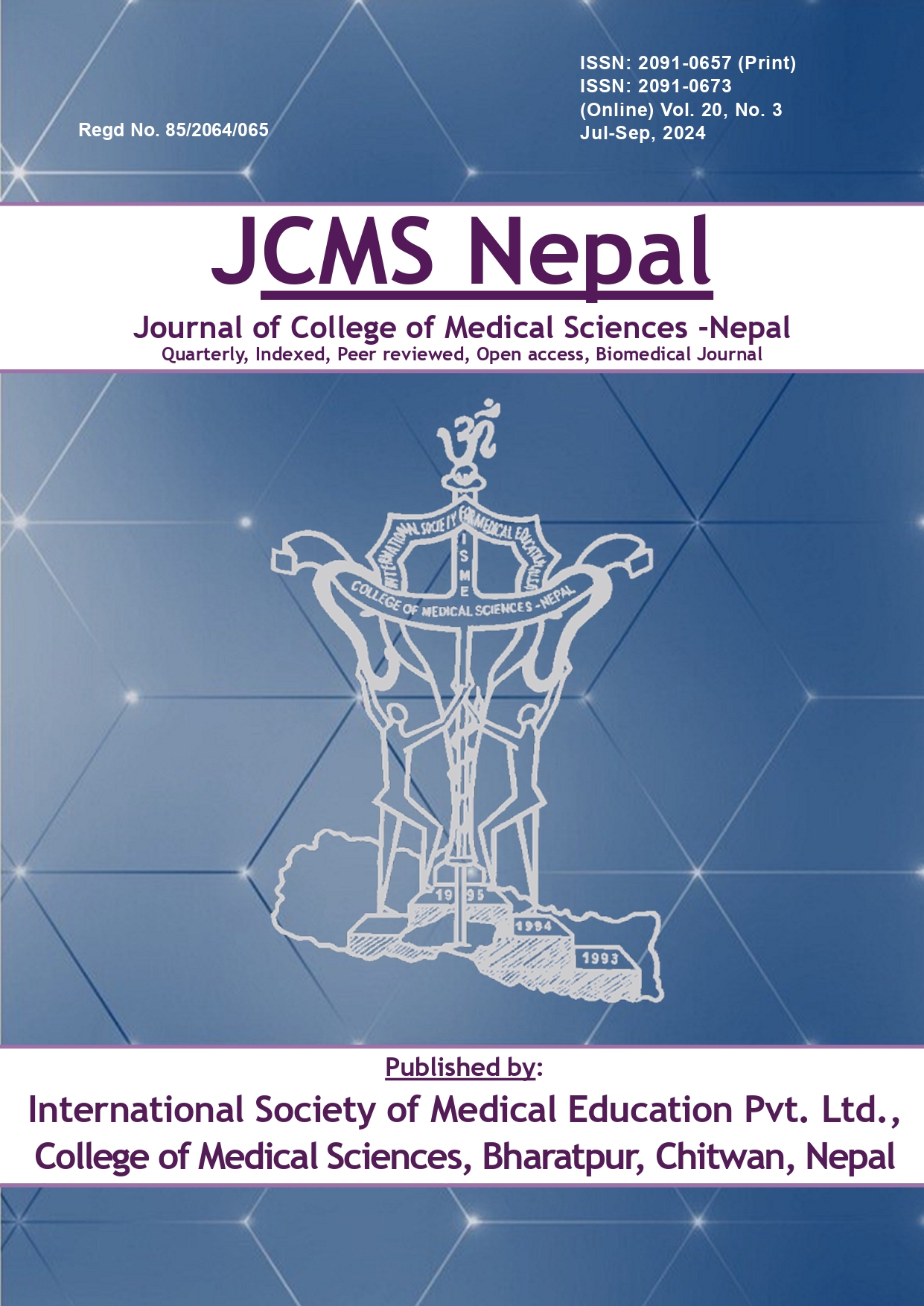Endoscopic Push-Through Technique Myringoplasty in Tympanic Membrane Perforations; An Institutional Experience in Kathmandu, Nepal
DOI:
https://doi.org/10.3126/jcmsn.v20i3.60096Keywords:
Keywords: Push-through technique, endoscopic, myringoplastyAbstract
Background
Push-through technique cartilage perichondrium composite graft myringoplasty involves placing the graft beneath the freshened perforation by endoscopic approach without elevating tympanomeatal flap. The aim of this study is to assess the graft uptake and hearing after push-through myringoplasty at our institution.
Methods
This prospective study was conducted in Otorhinolarynology Department of Nepal Medical College Teaching Hospital from November 2022 to October 2023 after obtaining ethical clearance from Research and Ethical Sub Committee (RESC). All patients aged 20 years and above with inactive type of chronic otitis media mucosal disease with conductive hearing loss underwent myringoplasty by push-through technique using cartilage perichondrium composite graft. Pure tone audiograms of the patients were done before and after surgery. Graft uptake and hearing results were evaluated at 12 weeks using SPSS. Paired t test was used to assess hearing improvement.
Results
The success rate among the participants who underwent endoscopic push through myringoplasty regarding graft uptake was 84.8% (78 of 92). The mean preoperative bone conduction threshold was 13.6±4.1 dB as compared to 13.1±4.0 dB postoperatively. Similarly, the mean preoperative air conduction threshold was 45.2±7.3 dB, with the postoperative value being 30.9±7.6 dB. The mean preoperative air-bone gap was 30.6±7.5 dB, while the air-bone gap postoperatively was 17.8±6.7 dB. Paired t-test comparing the means of the preoperative to postoperative air-bone gap showed a significant difference post-surgery with a p value of less than 0.001.
Conclusions
Push through technique myringoplasty can be used to repair perforations with good results in terms of graft uptake and improved hearing.
Downloads
Downloads
Published
How to Cite
Issue
Section
License
Copyright (c) 2024 The Author(s)

This work is licensed under a Creative Commons Attribution-NonCommercial-NoDerivatives 4.0 International License.
This license enables reusers to copy and distribute the material in any medium or format in unadapted form only, for noncommercial purposes only, and only so long as attribution is given to the creator.




